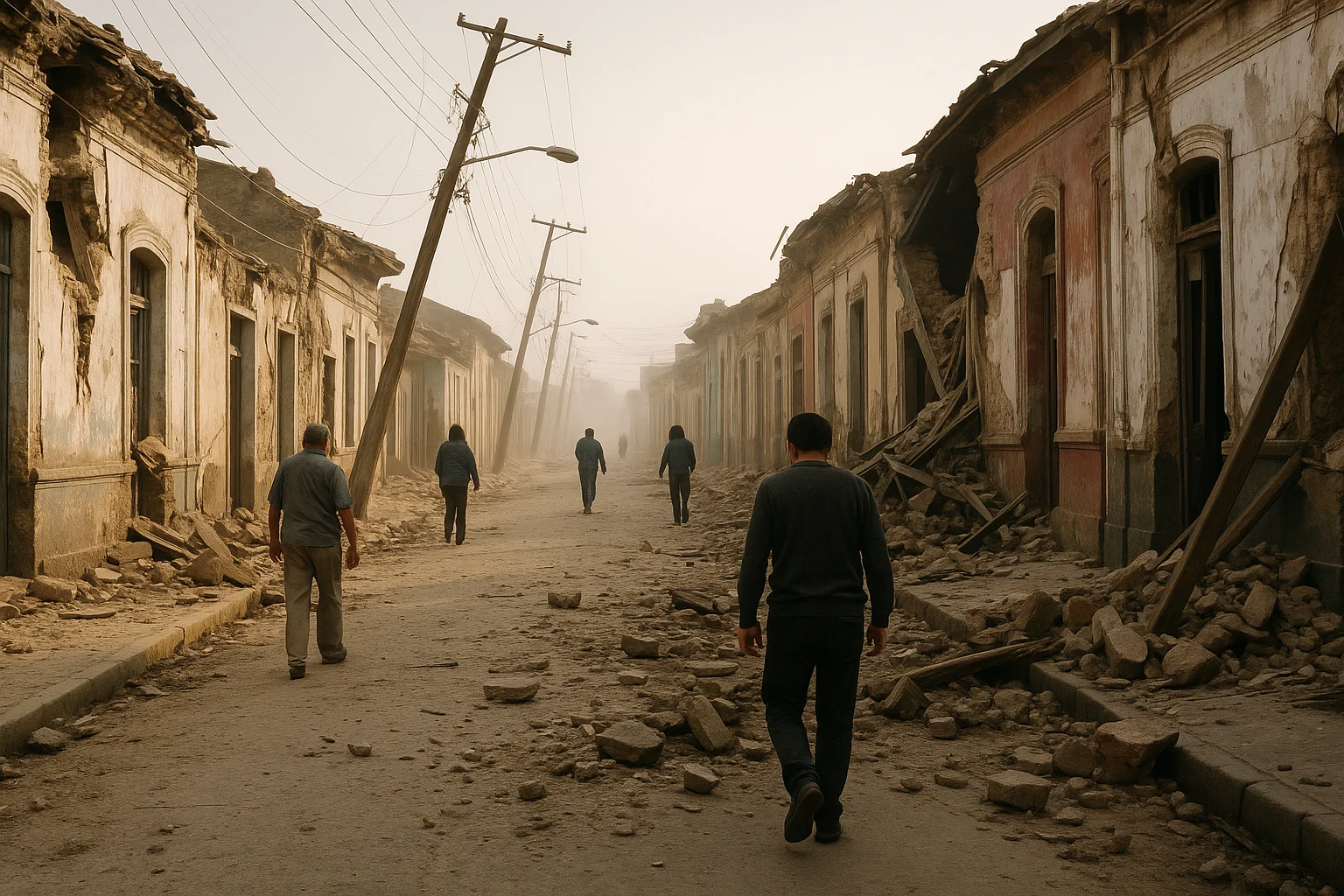
2010 Chile Earthquake
by: The Calamity Calendar Team
February 27, 2010
A Night of Seismic Fury
In the stillness of early morning, as most of Chile slept beneath a clear, starlit sky, the earth began to shudder. It started as a muffled rumble, a faraway grumble deep in the bones of the tectonic plates that converge beneath Chile's feet. By 3:34 AM, that rumble had morphed into a monstrous upheaval that shook the very essence of life in central and southern Chile. The 2010 Chile Earthquake had arrived.
Living on the Ring of Fire
Chile's unique position along the Pacific Ring of Fire—a notorious hotspot for seismic activity—was both a curse and a preparation. Its geographical reality forced the nation to respect the untamed power of natural forces. Decades of heart-wrenching encounters with the earth's fury, including the catastrophic 1960 Valdivia event, pressed Chile into a state of perpetual readiness. Strict building codes evolved, designed with earthquakes in mind, laying the groundwork for a resilient infrastructure meant to weather the worst of nature's rage. Nevertheless, the tremor that struck on February 27, 2010, was a stark reminder that despite meticulous planning, the earth’s unpredictability demands respect.
Moments of Chaos
Within seconds, Chile was at the mercy of the quake. Registered as an 8.8 on the moment magnitude scale, its epicenter lurked ominously offshore, 70 kilometers northeast of Concepción. The quake's brutal force sent aftershocks rippling across the region, some reaching magnitudes as high as 6.9, keeping communities on edge for days. Buildings trembled violently, bridges crumbled, highways cracked and split like dry leaves—human-made structures were no match against this formidable natural force.
Power and communication lines fell silent, severing towns and cities from the outside world. In the darkness, communities could only reach out to each other, grappling with the destruction that engulfed them.
Tsunami on the Horizon
Nature's onslaught was not yet complete. Amid the ruins, another threat loomed—tsunami waves, spawned by the quake's undersea tumult, were hurtling toward the Chilean coast. Tsunami warnings flashed across the Pacific, stretching as far as Japan and New Zealand. In Chile, the seaside town of Constitución found itself directly in the tsunami's path. One wave after another battered the already shaken coastal establishments, adding to the sea of debris and deepening the tragedy's human cost.
Aftermath and Optimism
The human toll was harrowing; 525 lives were lost, and 25 souls remained unaccounted. Approximately 800,000 were displaced, left to piece together their lives from the wreckage. Property damage ballooned to an estimated $30 billion USD, with roads, hospitals, schools, and countless homes left in shambles.
Thanks for subscribing!
Yet, amid the loss, resilience stirred. The Chilean government declared a state of catastrophe and swiftly mobilized its resources. International aid flowed in, and emergency response teams leapt into action, focusing on search and rescue, tending the injured, and providing refuge for the displaced.
Rising from Ruins
Recovery was a marathon, not a sprint. Chile looked inward and evaluated its procedures and preparedness. It was a clarion call for improved emergency responses and tsunami alert systems. Protocols were revamped, and community awareness initiatives sprang up, emphasizing survival knowledge as essential as fire drills in schools.
The calamity sparked burgeoning studies in seismology and engineering. Scientists dived into the data, gleaning insights that would better inform our understanding of subduction zone earthquakes. In Chile, the pursuit of stronger, more resilient infrastructure continued, supported by advancements in technology and unwavering resolve.
Lessons Carved into the Earth
Today, the story of the 2010 Chile Earthquake exists as more than a memory of destruction; it's an educational cornerstone in the global discourse on seismic preparedness. Lessons etched into Chile's bedrock ripple outward, informing policies, inspiring engineering feats, and underpinning a shared human quest to coexist with nature's volatile beauty.
As Chileans rebuilt their lives in the quake's aftermath, they stood testament to human endurance. In the face of a world continuously reshaped by unseen forces, resilience remains the strongest ally—a truth forged by their perseverance through one of Chile’s darkest hours.
Stay in the Loop!
Become a Calamity Insider and get exclusive Calamity Calendar updates delivered straight to your inbox.
Thanks! You're now subscribed.